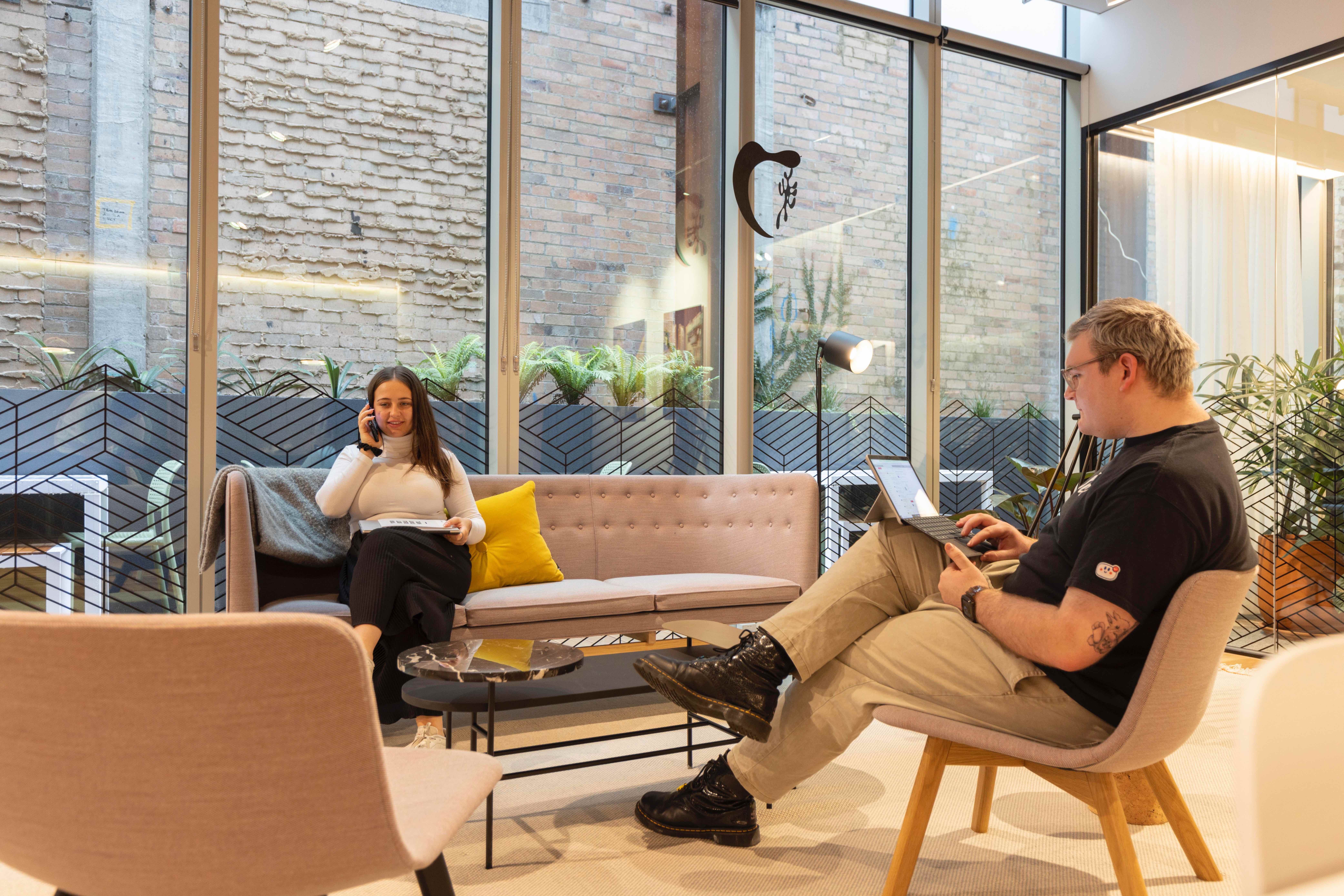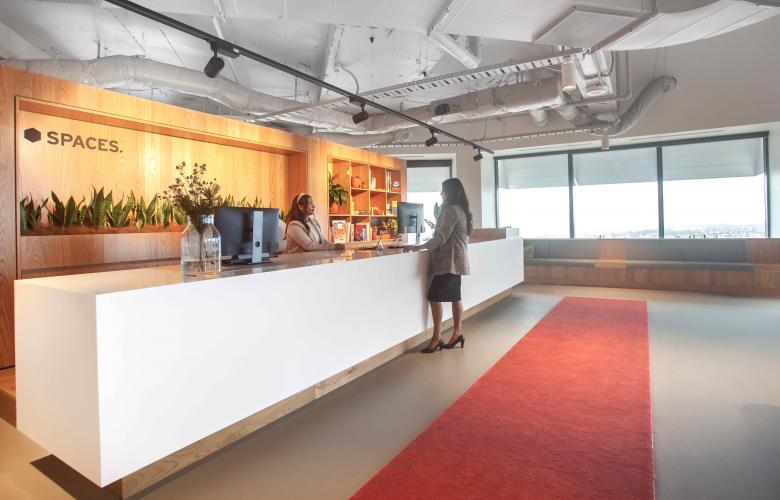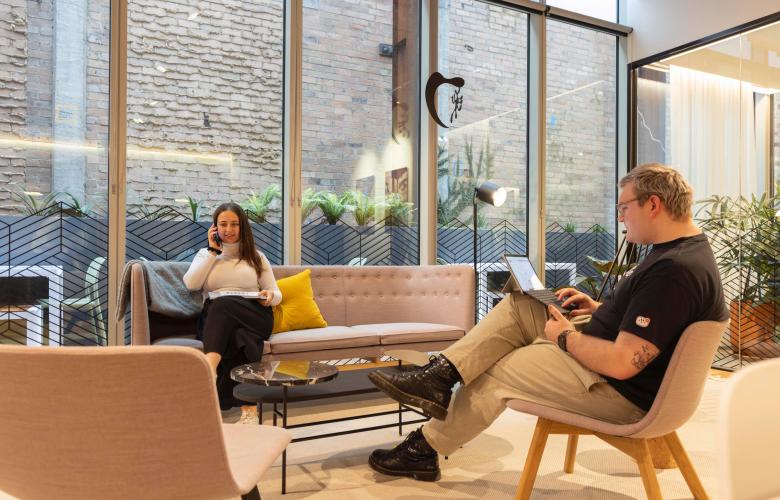Flexspace Benefits any Business... and any Property
Contact
Flexspace Benefits any Business... and any Property
Jamal Brown, founder of San Diego commercial real estate firm The Ocean Company, thinks that flexspaces are the future. Could commercial landlords that don’t embrace them could get left behind?
As a commercial property owner, you want to be assured of security, stability, and sustainable growth. But in the age of hybrid working, commercial landlords may need to rethink their definitions of how this is achieved. Adapting to the demands of corporate clients may require a shift away from long-term contracts on sprawling office spaces, and towards flexible leasing of bespoke workspaces.
The last couple of years have necessitated a major paradigm shift within the commercial real estate industry. The pandemic has catalysed a growing trend for flexible working, with an increasing number of companies responding to employee demand by embracing a hybrid model. This enables employees to split their time between the office, home and a local coworking space. These spaces are often adaptable and can be leased on a flexible basis to meet the client’s needs, whether they need a meeting room, a co-working space, hotdesking suites, break-out areas, or a combination of the same. This emerging trend in client demand has caused many commercial landlords and franchise operators to rethink their strategies.
As Founder and Principal of The Ocean Company, a San Diego-based firm that specialises in tenant representation, Jamal Brown has been at the frontline of this revolution.
“Workers value their freedom”
Brown firmly believes that flexible workspaces are a crucial element of this workspace revolution. Both commercial landlords and franchise operators are instrumental in helping their clients to navigate this new operational method, adapting their offerings to meet the client’s needs.
“There are a lot of people who left the office at the beginning of the pandemic and don’t really want to return,” he says. “That’s especially true of younger workers who now value more freedom in their work environment. They don’t want to commute 45 minutes each way on a busy freeway every day of the week.
“They want the flexibility of being able to get their work done somewhere close to where they live, which means they don’t have to commute into a centralised office five days a week.
“Employers are therefore becoming more heavily dependent on large national or international flexspace operators, because you can have one centralised office, but also many smaller satellite offices in the heart of communities where your workforce can go to do their work, potentially even meet as a team and be happier.”
Brown, who swapped a career in insurance for commercial property management in 2001, notes that while flexible workspaces have had a presence in his native San Diego for some time, they have both exploded in numbers and adapted their offerings in recent years.
Up until a couple of years ago, they were more traditional in style and what they offered customers. Now, he says, clients have many more interesting, exciting options with a greater focus on collaboration and working in relaxed environments. Conventional office spaces have given way to business lounges and breakout meeting areas. Brown has also noticed that flexspaces are increasingly opening in San Diego’s ‘neighbourhoods’ outside of the commercial Downtown centre – such as North Park and East Village – which reflects the 15-Minute City trend that has been growing around the world.
Commercial landlords are thinking outside the box and adapting their portfolios to include properties that are closer to residential areas, outside of their comfort zone of commercial hubs. These can provide a workspace that is often more convenient for employees than meeting at company HQ.
“Figure out what’s going to make your employee base happy”
Both corporate clients and their employees benefit substantially from the use of flexspaces. Regardless of size and sector, by offering clients membership to a flexspace operator with multiple centres in the city, commercial landlords can save their clients the expense and commitment that come with a central office, helping them to reduce their real estate spend and increasing their profitability.
“Flexspace can benefit businesses of any size in any sector,” Brown explains. “All you need to do is pick up memberships or choose a couple of different offices around the city or country where your employees are based. Or, better still, use a global operator like IWG where memberships grant access to thousands of workspaces worldwide.”
He says that CEOs who ignore trends such as hybrid working and fail to recognise the benefits of investing in flexspace risk being left behind.
“I believe that going forward, companies that recognise we can still get all our work done by adopting the hybrid model are going to outperform ones that don’t.
“A lot of founders want to think of their company as their baby. But when it comes down to your employees and what they’re doing for the company, that’s paramount. So it’s really more important to figure out what’s going to make your employee base happy and productive, and think about what’s going to help you retain the people that are really making this company profitable.”
But business leaders aren’t the only ones that could get left behind. Unless landlords adapt their offerings to better cater to changes in their clients’ demands, they may not be getting the most out of their properties.
“Companies will favour a hub-and-spoke model”
Landlords are ideally positioned to cater to the needs of their commercial clients. But Brown hastens to add that clients first need to initiate conversations with employees about their requirements.
“A lot of times, larger companies don’t have a discussion with their employees or fail to do an employee survey,” he says. “But it’s important to find out who wants to come back to the office and who is more comfortable with doing a hybrid flex model, either at their central office or with other flexible office options around town […] we need to promote that to our clients so that they understand how much space they really need as they go forward.”
After all, hybrid working and flexspace are here to stay. The majority of FTSE 250 firms are actively seeking to adapt to the hybrid model and we can expect smaller companies to follow suit.
“I don’t think that we’re going to go back to a time where every single person is coming into a centralised office, especially for larger companies,” adds Brown. “As long as work is getting done, as long as companies continue to be profitable, they’re going to look at the real estate spending of having, for example, two floors in a building to house all their employees as a wasted expense.
“Instead they will continue to favour a hub-and spoke-model that consolidates a relatively decent-sized central office, combined with the use of flexible workspaces or smaller satellite offices in areas where employees live.”
At IWG, we have spent 30 years refining and optimising our business model. As the world’s largest provider of flexible working solutions, we’re passionate about helping landlords and franchisees join the workspace revolution.
Find out how we can support you today.
Related Reading:
The Role of Franchise Operators and Landlords in the Future of Flexspace
Suburban rejuvenation. New places for workplaces. New opportunities for landlords.
What will new work trends mean for landlords in 2022?









